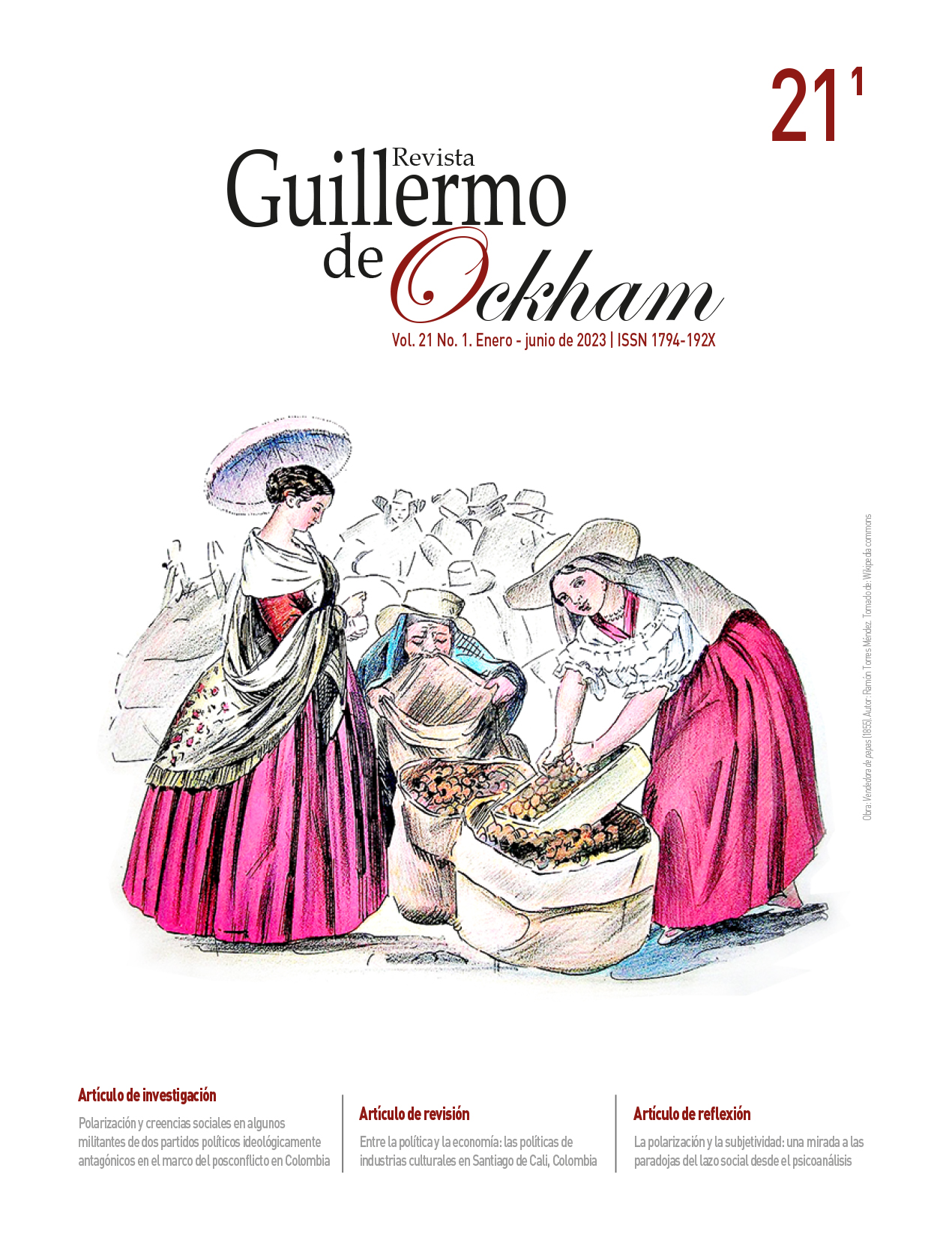Al-Natour, S., y Turetken, O. (2020). A comparative assessment of sentiment analysis and star ratings for consumer reviews. International Journal of Information Management, 54, 102132. https://doi.org/10.1016/j.ijinfomgt.2020.102132
Araújo, C. A. A. (2006). Bibliometria: evolução histórica e questões atuais. Em Questão, 12(1), 11-32. https://seer.ufrgs.br/index.php/EmQuestao/article/view/16
Ardanuy, J. (2012, abril). Breve introducción a la bibliometría. Universitat de Barcelona. https://bit.ly/3wH7eym
Babić, A., De Valck, K., y Sotgiu, F. (2020). Conceptualizing the electronic Word-of-mouth process: What we know and need to know about eWOM creation, exposure, and evaluation. Journal of the Academy of Marketing Science, 48(3), 422-448. https://doi.org/10.1007/s11747-019-00706-1
Bansal, H. S., y Voyer, P. A. (2000). Word-of-mouth processes within a services purchase decision context. Journal of Service Research, 3(2), 166-177. https://doi.org/10.1177/109467050032005
Cadavid, L., Awad, G., y Franco, C. J. (2012). Análisis bibliométrico del campo modelado de difusión de innovaciones. Estudios Gerenciales, 28(EE), 213-236. https://doi.org/10.18046/j.estger.2012.1486
Cañedo, R., Rodríguez, R., y Montejo, M. (2010). Scopus: la mayor base de datos de literatura científica arbitrada al alcance de los países subdesarrollados. Revista Cubana de ACIMED, 21(3), 270-282. http://www.redalyc.org/articulo.oa?id=377657496004
Chan, Y. Y. Y., y Ngai, E. W. T. (2011). Conceptualising electronic word of mouth activity: An input-process-output perspective. Marketing Intelligence and Planning, 29(5), 488-516. https://doi.org/10.1108/02634501111153692
Cheung, C. M. K., Lee, M. O. K., y Rabjohn, N. (2008). The impact of electronic word-of-mouth: The adoption of online opinions in online customer communities. Internet Research, 18(3), 229-247. https://doi.org/10.1108/10662240810883290
Cheung, M. Y., Luo, C., Sia, C. L., y Chen, H. (2009). Credibility of electronic word-of-mouth: Informational and normative determinants of on-line consumer recommendations. International Journal of Electronic Commerce, 13(4), 9-38. https://doi.org/10.2753/jec1086-4415130402
Chu, S. C., Chen, H. T., y Gan, C. (2020). Consumers’ engagement with Corporate Social Responsibility (CSR) communication in social media: Evidence from China and the United States. Journal of Business Research, 110, 260-271. https://doi.org/10.1016/j.jbusres.2020.01.036
Chu, S. C., y Kim, Y. (2011). Determinants of consumer engagement in electronic Word-Of-Mouth (eWOM) in social networking sites. International Journal of Advertising, 30(1), 47-75. https://doi.org/10.2501/IJA-30-1-047-075
Dellarocas, C. (2003). The digitization of word of mouth: Promise and challenges of online feedback mechanisms. Management Science, 49(10), 1407-1424. https://www.jstor.org/stable/4134013
Dwyer, P. (2007). Measuring the value of electronic word of mouth and its impact in consumer communities. Journal of Interactive Marketing, 21(2), 63-79. https://doi.org/10.1002/dir.20078
Goldsmith, R. E., y Horowitz, D. (2006). Measuring motivations for online opinion seeking. Journal of Interactive Advertising, 6(2), 2-14. https://doi.org/10.1080/15252019.2006.10722114
Gruen, T. W., Osmonbekov, T., y Czaplewski, A. J. (2006). eWOM: The impact of customer-to-customer online know-how exchange on customer value and loyalty. Journal of Business Research, 59(4), 449-456. http://dx.doi.org/10.1016/j.jbusres.2005.10.004
Hall, C. M. (2011). Publish and perish? Bibliometric analysis, journal ranking and the assessment of research quality in tourism. Tourism Management, 32(1), 16-27. https://doi.org/10.1016/j.tourman.2010.07.001
Harrison-Walker, L. J. (2001). E-complaining: a content analysis of an Internet complaint form. Journal of Services Marketing, 15(5), 397-412. https://doi.org/10.1108/EUM0000000005657
Hawkins, D. I., Best, R. J., y Coney, K. A. (2004). Consumer behavior: Building marketing strategy (9.a ed.). McGraw-Hill.
Hennig-Thurau, T., Gwinner, K. P., Walsh, G., y Gremler, D. D. (2004). Electronic word-of-mouth via consumer-opinion platforms: What motivates consumers to articulate themselves on the Internet? Journal of Interactive Marketing, 18(1), 38-52. https://doi.org/10.1002/dir.10073
Hennig-Thurau, T., Malthouse, E. C., Friege, C., Gensler, S., Lobschat, L., Rangaswamy, A., y Skiera, B. (2010). The impact of new media on customer relationships. Journal of Service Research, 13(3), 311-330. https://doi.org/10.1177/1094670510375460
Hennig-Thurau, T., y Walsh, G. (2003). Electronic word-of-mouth: Motives for and consequences of reading customer articulations on the Internet. International Journal of Electronic Commerce, 8(2), 51-74. https://doi.org/10.1080/10864415.2003.11044293
Hung, K. H., y Li, S. Y. (2007). The influence of eWOM on virtual consumer communities: Social capital, consumer learning, and behavioral outcomes. Journal of Advertising Research, 47(4), 485-495. https://doi.org/10.2501/s002184990707050x
Jansen, B. J., Zhang, M., Sobel, K., y Chowdury, A. (2009). Twitter power: Tweets as electronic word of mouth. Journal of the American Society for Information Science and Technology, 60(11), 2169-2188. https://doi.org/10.1002/asi.21149
Lee, E. J., y Shin, S. Y. (2014). When do consumers buy online product reviews? Effects of review quality, product type, and reviewer’s photo. Computers in Human Behavior, 31, 356-366. https://doi.org/10.1016/j.chb.2013.10.050
Lenhart, A., Purcell, K., Smith, A., y Zickuhr, K. (2010, 3 de febrero). Social media & mobile Internet use among teens and young adults. PEW Research Center. https://bit.ly/3NtoON3
León, A. M., Castellanos, Ó. F., y Vargas, F. A. (2006). Valoración, selección y pertinencia de herramientas de software utilizadas en vigilancia tecnológica. Ingeniería e Investigación, 26(1), 92-102. https://doi.org/10.15446/ing.investig.v26n1.14680
Litvin, S. W., Goldsmith, R. E., y Pan, B. (2008). Electronic word-of-mouth in hospitality and tourism management. Tourism Management, 29(3), 458-468. https://doi.org/10.1016/j.tourman.2007.05.011
Liu, S. Q., Ozanne, M., y Mattila, A. S. (2018). Does expressing subjectivity in online reviews enhance persuasion? Journal of Consumer Marketing, 35(4), 403-413. https://doi.org/10.1108/jcm-02-2017-2109
Liu, Y. (2006). Word of mouth for movies: Its dynamics and impact on box office revenue. Journal of Marketing, 70(3), 74-89. https://doi.org/10.1509/jmkg.70.3.074
López, J. M. (1972). El análisis estadístico y sociométrico de la literatura científica. Centro de Documentación Informática Médica.
McWilliam, G. (2000). Building stronger brands through online communities. Sloan Management Review, 41(3), 43-54. https://bit.ly/3PD5azS
Nam, K., Baker, J., Ahmad, N., y Goo, J. (2020). Dissatisfaction, disconfirmation, and distrust: An empirical examination of value co-destruction through negative electronic Word-Of-Mouth (eWOM). Information Systems Frontiers, 22(1), 113-130. https://doi.org/10.1007/s10796-018-9849-4
Oliver, R. L. (1999). Whence customer loyalty? Journal of Marketing, 63, 33-44. https://doi.org/10.2307/1252099
Park, D. H., y Kim, S. (2008). The effects of consumer knowledge on message processing of electronic word-of-mouth via online consumer reviews. Electronic Commerce Research and Applications, 7(4), 399-410. https://doi.org/10.1016/j.elerap.2007.12.001
Park, D. H., Lee, J., y Han, I. (2007). The effect of on-line consumer reviews on consumer purchasing intention: The moderating role of involvement. International Journal of Electronic Commerce, 11(4), 125-148. https://doi.org/10.2753/JEC1086-4415110405
Phelps, J. E., Lewis, R., Mobilio, L., Perry, D., y Raman, N. (2004). Viral marketing or electronic word-of-mouth advertising: Examining consumer responses and motivations to pass along email. Journal of Advertising Research, 44(4), 333-348. https://doi.org/10.1017/s0021849904040371
Reyes-Menéndez, A., Correia, M. B., Matos, N., y Adap, C. (2020). Understanding online consumer behavior and eWOM strategies for sustainable business management in the tourism industry. Sustainability, 12(21), 8972. https://doi.org/10.3390/su12218972
Richins, M. L., y Root-Shaffer, T. (1988). The role of involvement and opinion leadership in consumer word-of-mouth: An implicit model made explicit. Advances in Consumer Research, 15, 32-36. https://bit.ly/38I0EQ7
Rodríguez, A., Osorio, C. F., y Peláez, J. (2020). Dos décadas de investigación en electronic word-of-mouth: un análisis bibliométrico. Revista Científica Pensamiento y Gestión, (48), 250-275. https://bit.ly/3Nt5uPV
Rueda, G., Gerdsri, P., y Kocaoglu, D. F. (2007). Bibliometrics and social network analysis of the nanotechnology field. PICMET, (2007), 2905-2911. http://dx.doi.org/10.1109/PICMET.2007.4349633
Sen, S., y Lerman, D. (2007). Why are you telling me this? An examination into negative consumer reviews on the Web. Journal of Interactive Marketing, 21(4), 76-94. https://doi.org/10.1002/dir.20090
Solano, E., Castellanos, S. J., López, M. M., y Hernández, J. I. (2009). La bibliometría: una herramienta eficaz para evaluar la actividad científica postgraduada. Revista Electrónica de las Ciencias Médicas en Cienfuegos, 7(4), 291-294. http://www.medisur.sld.cu/index.php/medisur/article/view/745
Sparks, B. A., y Browning, V. (2011). The impact of online reviews on hotel booking intentions and perception of trust. Tourism Management, 32(6), 1310-1323. https://doi.org/10.1016/j.tourman.2010.12.011
Spinak, E. (1996). Diccionario enciclopédico de bibliometría, cienciometría e informetría. Unesco. https://bit.ly/3sPWQTX
Thorson, K. S., y Rodgers, S. (2006). Relationships between blogs as eWOM and interactivity, perceived interactivity, and parasocial interaction. Journal of Interactive Advertising, 6(2), 5-44. https://doi.org/10.1080/15252019.2006.10722117
Van Eck, N. J., y Waltman, L. (2010). Software survey: VOSviewer, a computer program for bibliometric mapping. Scientometrics, 84(2), 523-538. https://doi.org/10.1007/s11192-009-0146-3
Van Eck, N. J., y Waltman, L. (2019, 10 de enero). Manual for VOSviwer version 1.6.10. CWTS Meaningful Metrics. https://bit.ly/3MGbAfN
Van Eck, N. J., Waltman, L., Dekker, R., y Van Den Berg, J. (2010). A comparison of two techniques for bibliometric mapping: Multidimensional scaling and VOS. Journal of the American Society for Information Science and Technology, 64(12), 2405-2416. https://doi.org/10.1002/asi.21421
Vermeulen, I. E., y Seegers, D. (2009). Tried and tested: The impact of online hotel reviews on consumer consideration. Tourism Management, 30(1), 123-127. https://doi.org/10.1016/j.tourman.2008.04.008
Wallin, J. A. (2005). Bibliometric methods: Pitfalls and possibilities. Basic and Clinical Pharmacology and Toxicology, 97(5), 261-275. https://doi.org/10.1111/j.1742-7843.2005.pto_139.x
Westbrook, R. A. (1987). Product/consumption-based affective responses and postpurchase processes. Journal of Marketing Research, 24(3), 258-270. https://doi.org/10.1177/002224378702400302

 Perfil Google Scholar
Perfil Google Scholar





























